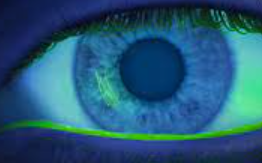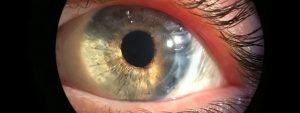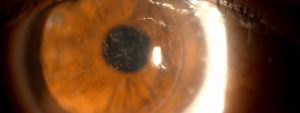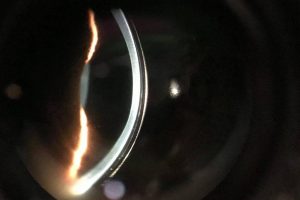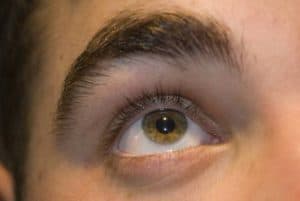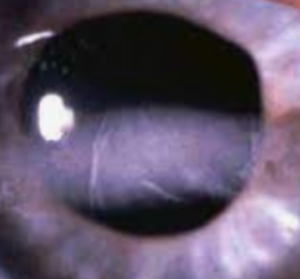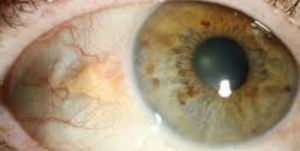A corneal abrasion, also called a scratched cornea is one of the most common eye injuries.
What is the cornea?
The cornea is the clear front surface of the eye. A corneal abrasion disrupts the corneal epithelium, which is the protective outer layer of cells of the cornea, this can lead a range of corneal diseases.
This disruption creates an open wound that increases your risk of developing a serious eye infection. Therefore, it’s important to see an eye doctor immediately if you suspect you have a corneal abrasion.
What causes a corneal scratch?
There are countless ways for a corneal abrasion to occur. Anything, no matter how big or small, that comes into contact with the surface of your eye can cause a scratched cornea.
Objects such as paper, tree branches, a pet, a finger, makeup brushes, workplace debris, sports equipment and more are all common causes of a corneal abrasion.
In fact, many corneal abrasions aren’t caused by a major traumatic event, such as getting poked in the eye, but rather by dust, sand and other small particles, especially if you rub your eyes.
Another possible cause is dry eye, which can increase your risk of a corneal abrasion. If your eyes dry out while you are sleeping, your eyelids may stick to your cornea, causing a scratched cornea.
While you may think contact lenses can protect you from a corneal abrasion, they usually don’t. In fact, if your contacts are damaged or you wear them too long, they may increase your risk of a scratched cornea.
Schedule an appointment with an eye doctor near you who can evaluate whether you have a corneal abrasion.
SEE RELATED: What Is a Corneal Abrasion?
Symptoms of a corneal scratches
A corneal abrasion often causes significant discomfort. Other signs and symptoms of corneal abrasion include:
- A gritty or foreign body sensation in the eye
- Blurry or decreased vision
- Headache
- Eye pain
- Redness
- Sensitivity to light
- Tearing, watery eyes
- Twitching
- Occasionally, nausea
Corneal Abrasion Treatment
Based on your eye exam, your eye doctor will treat your corneal abrasion with one or more of the following options:
- A patch or bandage to be worn over your injured eye, to keep you from blinking and making the corneal abrasion worse.
- Use of moisturizing eye drops or ointment. This adds a soothing layer over the cornea.
- Antibiotic ointment or eye drops to prevent an eye infection. Over-the-counter pain medications may be prescribed to decrease the pain.
- Artificial tears may also help to relieve eye pain
Usually, your eye doctor will want to examine your eye again within 24 hours to re-evaluate the injury. Occasionally, the injury may not heal completely or correctly, resulting in what is called a recurrent corneal erosion. This type of injury can be long-lasting, and occur over several months or years.
LEARN MORE: Guide to Corneal Diseases
If the injury that appears to have healed becomes painful again, immediately contact an eye doctor near you.

